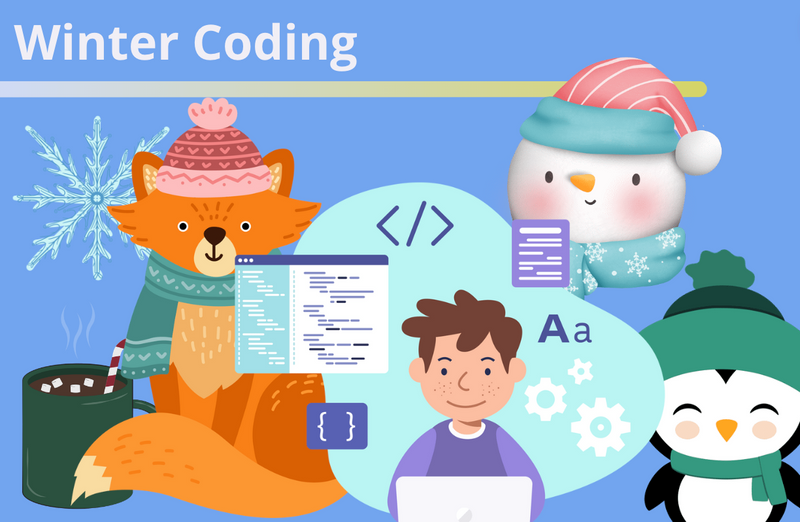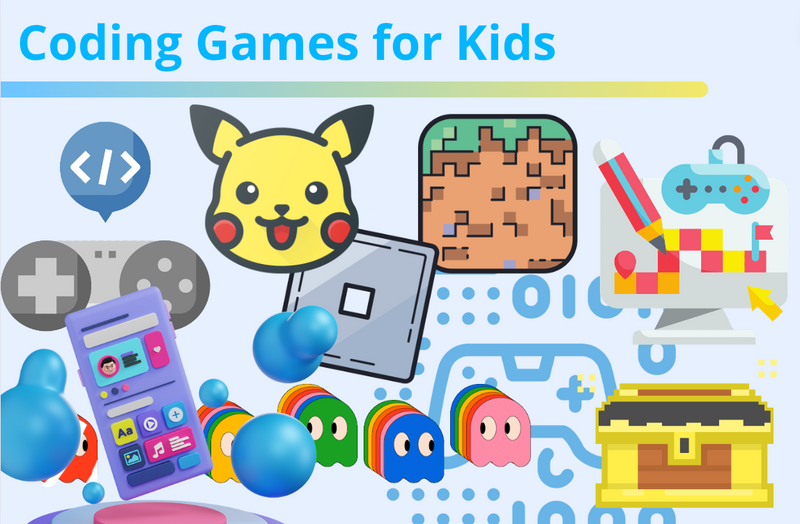When we wake up, technology surrounds and supports us throughout the day. Technology can make life convenient, save lives, heal the world, and much more! As technology continues to rise around us, it’s becoming essential for people to understand how our digital world functions. Coding is a fantastic solution to comprehending our high-tech environment because it’s how we communicate with computers and tell them what to do. Furthermore, learning to code equips us with the tools to empower innovation and contribute to society.
But how can we teach this invaluable skill to younger kids? Is it even possible for elementary students to retain computer science information? Keep reading to find out what age a child can start coding.
To get started right away, join an award-winning live online beginner-friendly Scratch coding class: ScratchJr (K-2); Scratch Ninja (2-5); Accelerated Scratch (5+).
Find out what age a child can begin coding
We may often think of coding as a skill out of reach for younger children; however, your child can start learning computer science concepts as young as five years old! Anne Wojcicki, CEO and co-founder of 23andMe, believes that “all students should have the opportunity to learn how to program. Computer science is the basis for modern-day creativity and expression.” The need for coding opportunities Wojcicki expresses is underway as more K12 schools implement CS fundamentals into their curriculum.
Research has shown how coding can increase problem-solving skills, computational thinking, and creativity, which are crucial for our growing learners. Coding can also help students develop early childhood numeracy and literacy skills. Coding has many benefits, but it’s worth noting its significance. As our world progresses into a future dependent on technology, coding is the bridge children can use to understand their connection to the future.
The urgency of integrating computer programming into K12 curricula is ever present as studies show the benefits and methods of effectively teaching this invaluable skill. Research has shown that children can begin coding at five. MIT researchers created ScratchJr, a program designed with five to seven-year-olds in mind, so students who don’t know how to read can still experience the joy of coding their first computer program!
Programming is feasible for young learners, but to introduce computer science to early childhood learners, we first need a beneficial model to follow. A new method of implementing computer science into the classroom is by thinking of “coding as a playground.” In a study conducted by Marina Umaschi Bers, a co-developer of ScratchJr, they found it was possible to teach coding as young as three by using specific strategies to promote communication, collaboration, and creativity. Bers extended her research by writing a book, Coding As A Playground, to help guide educators and parents on how they can make coding more interactive and playful so that kids don’t miss out on the impactful benefits computer programming can provide.
Furthermore, the K-12 Computer Science Framework believes in the possibility of coding by five-year-olds by dedicating a whole section to computer science education for early childhood education. The K-12 Computer Science Framework is a guide developed by experts from the Association for Computing Machinery, Code.org, Computer Science Teachers Association, Cyber Innovation Center, and National Math and Science Initiative. This framework is supported by companies like Google, Amazon, Microsoft, and more! In the section dedicated to pre-k learners, the framework claims, “computer science is well-suited for early childhood education” because it offers a learning environment where young kids can learn while also playing and creating. Experts categorize how computer science can enhance young students’ learning by focusing on social and emotional learning, patterns, problem-solving, representation, and sequencing.
Ways to get your kid excited about coding
Getting young students excited about coding is the key to success! As mentioned before, we want to make coding engaging, and some ways we can do that at home are by making real-world connections, making a game of it, and making it social. Explore ideas for getting your kid interested in coding here.
How to start your child’s coding education
Enrolling your kid in a Create & Learn class is a terrific step to enriching your student’s education and future. Create & Learn provides over 30 courses for K12 students interested in STEM. Create & Learn classes are designed by highly qualified experts from the tech industry and catered to meet your child’s learning needs. We ensure a positive learning environment by offering small classroom sizes and the opportunity to continue coding practice after class. In live online sessions, students can learn alongside STEM-curious classmates and seek assistance from experienced teachers.
If you have five-year-olds, check out our course on Scratch Junior. Scratch Jr. is a visual programming language developed by MIT experts who created Scratch. Scratch Jr. is a fantastic language to begin coding with because it’s easier for younger students to grasp coding concepts and skills while also having fun. By enrolling your child in a C&L class, they’ll be able to learn about loops, messages, events, and more! Your child will leave their sessions with fun, creative projects and the confidence to begin their coding journey with Scratch and many more! For only $15, enroll your student in our introduction class so they can experience the wonder and joy of creating their first computer program!
Now you know how young a child can start learning coding
Children can begin coding as young as five, but it’s also necessary to think about how to introduce this fantastic skill to them. There are various ways to make coding fun: make a game out of the learning process, make it playful, and make activities more meaningful. One great way to start is with Scratch Jr. Find out what ScratchJr projects your child can create today!
Written by Hunter Wilkinson, a fervent reader and learner. She got into education to share her passion for storytelling and STEAM instruction. In her free time, Hunter loves to write songs/poems, run, play video games, and hang out with her two fluffy cats.




